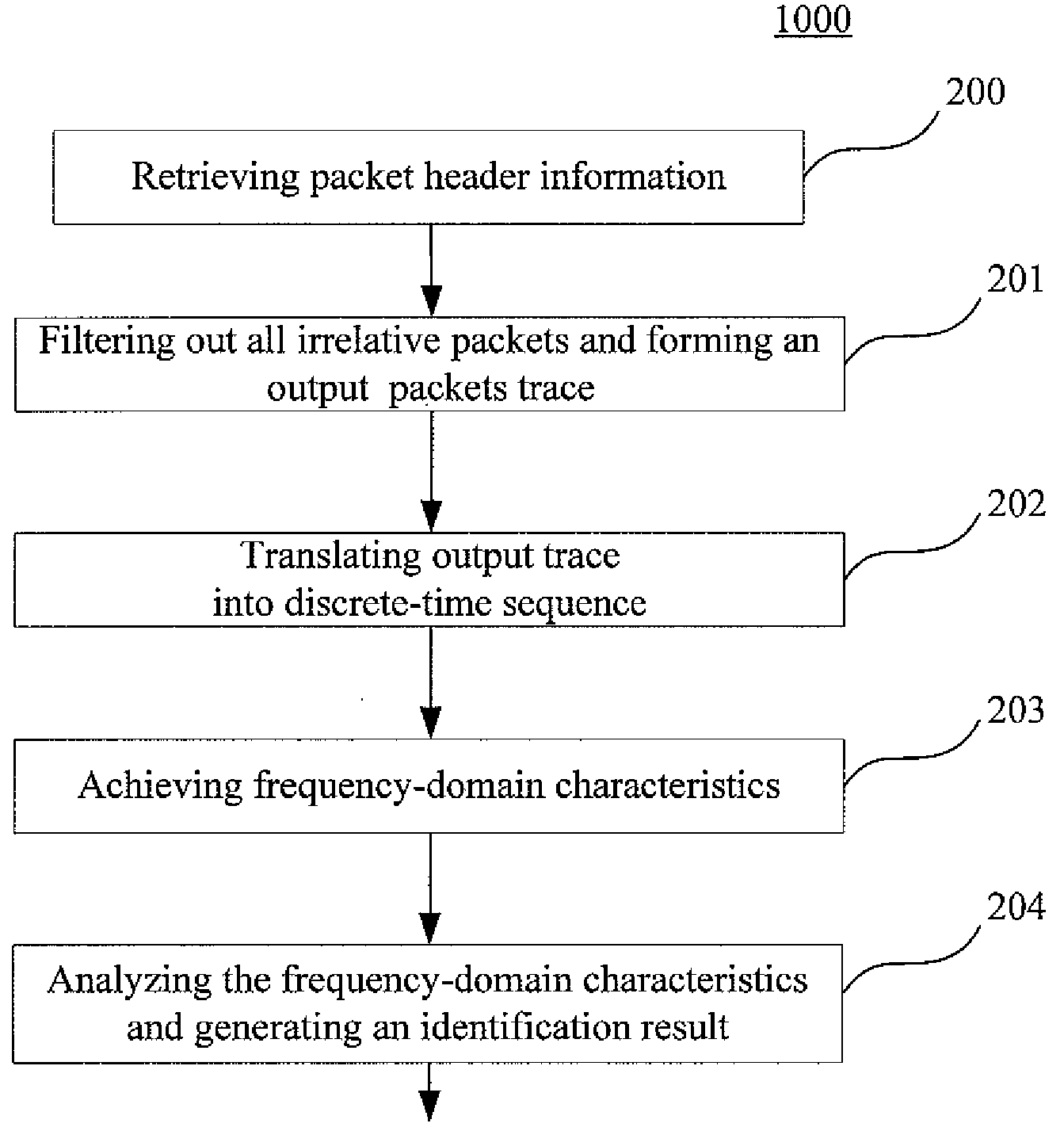Systems and processes of identifying p2p applications based on behavioral signatures
a technology of behavioral signatures and system and process, applied in the field of system and process for identifying peertopeer (p2p) applications, can solve the problems of difficult task to obtain packet payloads, useless default port-based identification,
- Summary
- Abstract
- Description
- Claims
- Application Information
AI Technical Summary
Benefits of technology
Problems solved by technology
Method used
Image
Examples
Embodiment Construction
[0023]Embodiments of the present invention will be described with reference to the accompanying drawings, but these drawings are presented only for the illustrative purpose and in no respect, are intended to limit the present invention.
[0024]FIG. 1 shows an exemplary system 100 configured to identify P2P applications and specific P2P software from an original mixed packet trace according to the invention.
[0025]As shown in FIG. 1, the system 100 comprises a retrieving unit 10, a filter 20, a filtering conditions setting unit 30, a concurrent connections number sequence generating unit 40, a transmission sessions sequence generating unit 50, a sequence processor (SP) 60 and an analyzer 70.
[0026]The retrieving unit 10 is configured to retrieve a packet header from each packet in a packet trace. The retrieved packet header may include packet time stamp (TS), transport layer protocol (TCP or UDP), source IP address, source port number, and destination IP address and destination port numb...
PUM
 Login to View More
Login to View More Abstract
Description
Claims
Application Information
 Login to View More
Login to View More - R&D
- Intellectual Property
- Life Sciences
- Materials
- Tech Scout
- Unparalleled Data Quality
- Higher Quality Content
- 60% Fewer Hallucinations
Browse by: Latest US Patents, China's latest patents, Technical Efficacy Thesaurus, Application Domain, Technology Topic, Popular Technical Reports.
© 2025 PatSnap. All rights reserved.Legal|Privacy policy|Modern Slavery Act Transparency Statement|Sitemap|About US| Contact US: help@patsnap.com



